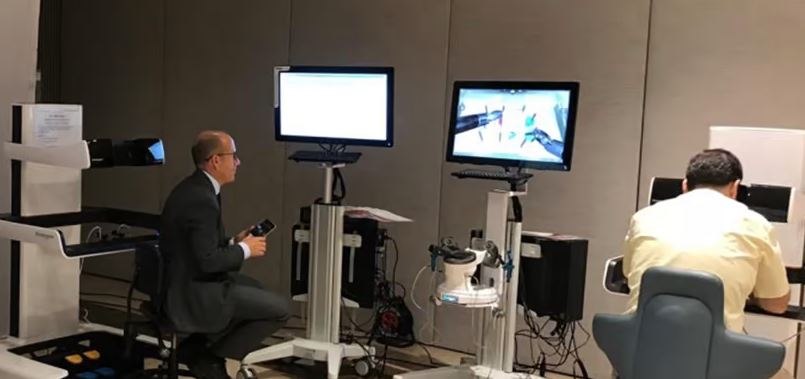Customer Company Size
Large Corporate
Region
- Europe
Country
- Croatia
Product
- ICONICS GENESIS32™ HMI/ SCADA suite
Tech Stack
- Matrikon’s OPC server
- Schneider Electric M340 PLC
- Ethernet network
Implementation Scale
- Enterprise-wide Deployment
Impact Metrics
- Productivity Improvements
- Digital Expertise
Technology Category
- Application Infrastructure & Middleware - Data Exchange & Integration
Applicable Industries
- Education
Applicable Functions
- Facility Management
Use Cases
- Building Automation & Control
- Real-Time Location System (RTLS)
Services
- System Integration
About The Customer
The Museum of Krapina Neanderthals is located in a glen between two small hills near the modern city of Krapina, in northern Croatia. The museum represents the spectacular Krapina site, where a Neanderthal village was discovered in 1899 by Dragutin Gorjanovic. The archeological site, one of the richest and most heterogeneous in the world, had over eight hundred fossil remains of 75 Neanderthals and their tools and weapons. Opened in February 2010, visitors to the museum’s 1,200 square meter exhibition space experience a simulation of the way of life in a Neanderthal cave 130 thousand years ago. Through touch screens, video-walls and numerous audio, visual and scent installations, visitors enjoy a highly interactive museum experience. The Museum of Krapina Neanderthals is technologically oriented and extraordinarily equipped for multimedia presentations enabling an engaging visitor experience.
The Challenge
The Museum of Krapina Neanderthals, located in northern Croatia, required a solution to integrate and automate its building management systems, security systems, and multimedia systems. The museum, which is technologically oriented and extraordinarily equipped for multimedia presentations, needed a system that could handle data acquisition and aggregation, analysis and alarming, visualization, and real-time status of installations and components. The challenge was to harmoniously integrate, coordinate, and automate these diverse subsystems, which included computers, projectors, MPEG players, audio, video and scenting equipment, electrical branch circuits and lighting, metal curtains, HVAC, Siemens fire system, and Honeywell intrusion system.
The Solution
ICONICS and ECCOS inženjering developed a unique solution for visualization and control of the Museum of Krapina Neanderthals. The ICONICS GENESIS32™ HMI/ SCADA suite was deployed to connect and automate the museum’s building management systems, security systems, and multimedia systems. The system was enabled with data acquisition and aggregation, analysis and alarming, visualization, and real-time status of installations and components. All of these were accessible through a single personal computer with a simplified and reliable graphical interface. At the core of the system, ICONICS GENESIS32, using Matrikon’s OPC server and a Schneider Electric M340 PLC, integrates to establish full supervision and control over all the electronic and electrical systems. The vast majority of communication is based on the local Ethernet network, while the PLC is connected with security and BMS systems through digital/analog inputs and outputs.
Operational Impact

Case Study missing?
Start adding your own!
Register with your work email and create a new case study profile for your business.
Related Case Studies.

Case Study
Revolutionizing Medical Training in India: GSL Smart Lab and the LAP Mentor
The GSL SMART Lab, a collective effort of the GSL College of Medicine and the GSL College of Nursing and Health Science, was facing a challenge in providing superior training to healthcare professionals. As clinical medicine was becoming more focused on patient safety and quality of care, the need for medical simulation to bridge the educational gap between the classroom and the clinical environment was becoming increasingly apparent. Dr. Sandeep Ganni, the director of the GSL SMART Lab, envisioned a world-class surgical and medical training center where physicians and healthcare professionals could learn skills through simulation training. He was looking for different simulators for different specialties to provide both basic and advanced simulation training. For laparoscopic surgery, he was interested in a high fidelity simulator that could provide basic surgical and suturing skills training for international accreditation as well as specific hands-on training in complex laparoscopic procedures for practicing physicians in India.

Case Study
IoT platform Enables Safety Solutions for U.S. School Districts
Designed to alert drivers when schoolchildren are present, especially in low-visibility conditions, school-zone flasher signals are typically updated manually at each school. The switching is based on the school calendar and manually changed when an unexpected early dismissal occurs, as in the case of a weather-event altering the normal schedule. The process to reprogram the flashers requires a significant effort by school district personnel to implement due to the large number of warning flashers installed across an entire school district.

Case Study
Implementing Robotic Surgery Training Simulator for Enhanced Surgical Proficiency
Fundacio Puigvert, a leading European medical center specializing in Urology, Nephrology, and Andrology, faced a significant challenge in training its surgical residents. The institution recognized the need for a more standardized and comprehensive training curriculum, particularly in the area of robotic surgery. The challenge was underscored by two independent studies showing that less than 5% of residents in Italian and German residency programs could perform major or complex procedures by the end of their residency. The institution sought to establish a virtual reality simulation lab that would include endourological, laparoscopic, and robotic platforms. However, they needed a simulator that could replicate both the hardware and software of the robotic Da Vinci console used in the operating room, without being connected to the actual physical console. They also required a system that could provide both basic and advanced simulation training, and a metrics system to assess the proficiency of the trainees before they performed surgical procedures in the operating theater.

Case Study
Edinburgh Napier University streamlines long-distance learning with Cisco WebEX
• Geographically dispersed campus made in-person meetings costly and inconvenient.• Distance-learning programs in Malaysia, India, and China required dependable, user-friendly online tools to maximize interaction in collaborative workspaces.• Virtual learning environment required a separate sign-in process, resulting in a significant administrative burden for IT staff and limited adoption of collaboration technology.

Case Study
8x increased productivity with VKS
Before VKS, a teacher would spend a lot of time showing a group of 22 students how to build a set of stairs within a semester of 120 hours. Along with not leaving the teacher much time to provide one-on-one support for each student to properly learn carpentry, it also left a considerable amount of room for error. Key information would be misinterpreted or lost as the class was taught in the typical show-and-tell way.

Case Study
Scalable IoT Empowering GreenFlex's Sustainable Growth
GreenFlex, a company that supports sustainable development, decarbonization, and energy efficiency, faced several challenges in its quest to expand its business. The company needed to deploy a robust and sustainable IoT technology to support its growth. It was crucial for them to monitor and control devices at customer sites in a safe and reliable manner. They also needed to integrate devices across a range of communication protocols and gather and act on data to meet efficiency targets. GreenFlex had previously built IoT capabilities into its digital platform, GreenFlexIQ, to monitor and manage customer sites remotely. However, they soon realized that they needed a new platform to support their ambitions. They needed a platform that could scale to connect more devices for production management and make it easier for the operations team to manage devices in the field.






